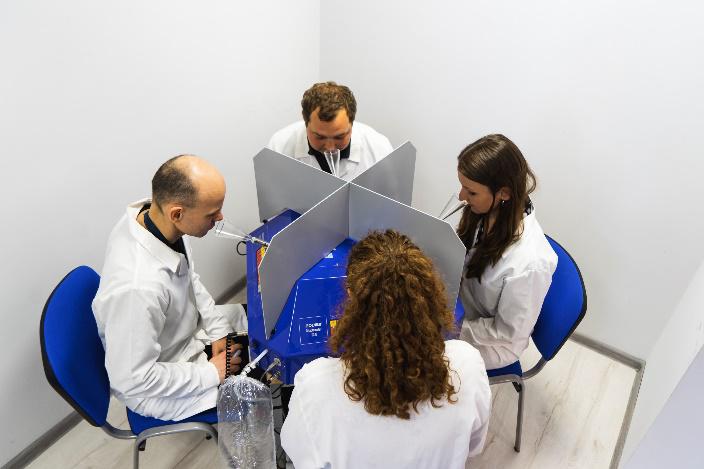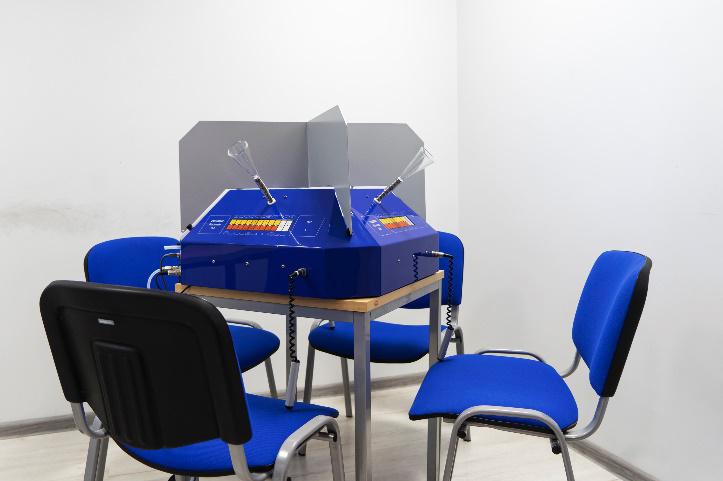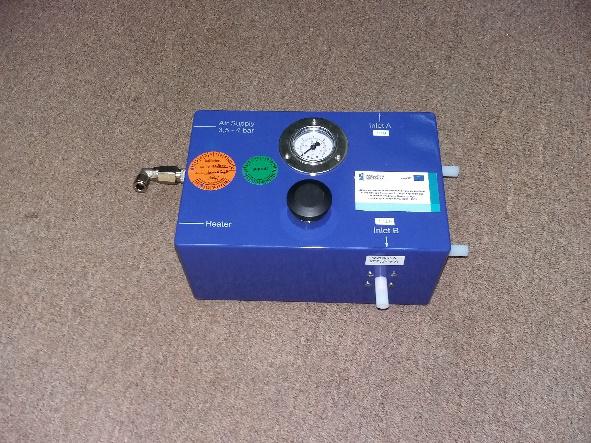Determination of odour concentration by dynamic olfactometry
The odour concentration [ouE/m3] in the samples taken, should be determined before 30 hours.
Odour concentration is measured:
- according to the dilution technique of the test gas sample – by the dynamic dilution method,
- according to the way the evaluators’ opinions are collected – by the “yes-no” method.
To carry out the measurements, a 4-station TO8 olfactometer with automatic odour concentration conversion is used. The olfactometer runs on compressed air, which passes through a group of filters with silica gel (dehumidification), activated carbon (separation of odour substances) and a fine fibreglass filter (separation of dust).
Dynamic dilutions involve mixing a stream of test gas with a stream of clean air. The mixture prepared in the olfactometer as a variable dilution stream is fed to the measurement participants (the evaluation team) for evaluation. The task of the evaluators is to determine the point at which they sense the presence of an odour.

One evaluator’s score after one series of dilutions is calculated as the geometric mean of the adjacent dilutions at which a “yes”, “no” response was given. The result of the team measurement is the geometric mean of the individual results.
The team of evaluators consists of 4 olfactory evaluators with a specific sensitivity to the reference odourant n-butanol and little variation in sensitivity over time. In order to maintain the highest standards and the quality of the results obtained, prior to each determination, the evaluators are checked for olfactory performance using a European standard gas: n-butanol. The olfactometer is operated by the operator.
The amount of odorous substances is measured in odour units [ouE/m3]. The odour unit [ouE/m3] corresponds to the amount of odour substance contained in 1 m3 of neutral air at 20oC and 1013 hPa. By definition, it corresponds to the odour threshold at which the odour is perceptible by 50% of a group of people representative of the population. The odour concentration at this odour threshold is 1 ou/m3 as defined.
For samples for which the maximum dilution possible in the olfactometer is insufficient (samples with a high odour concentration), the sample is pre-diluted in the laboratory before being connected to the olfactometer. The sample is diluted using the EPD system.
Confirmation of our experience and competence is provided by participation in international proficiency tests. In 2021, the Research Laboratory of Otto was the only one in Poland to receive a positive result from an international proficiency test for the determination of odour concentration.
Please send inquiries regarding cooperation to the following address: rzeszow@ottoindustries.com.pl or via the contact form available on the website in the Contact us tab.


